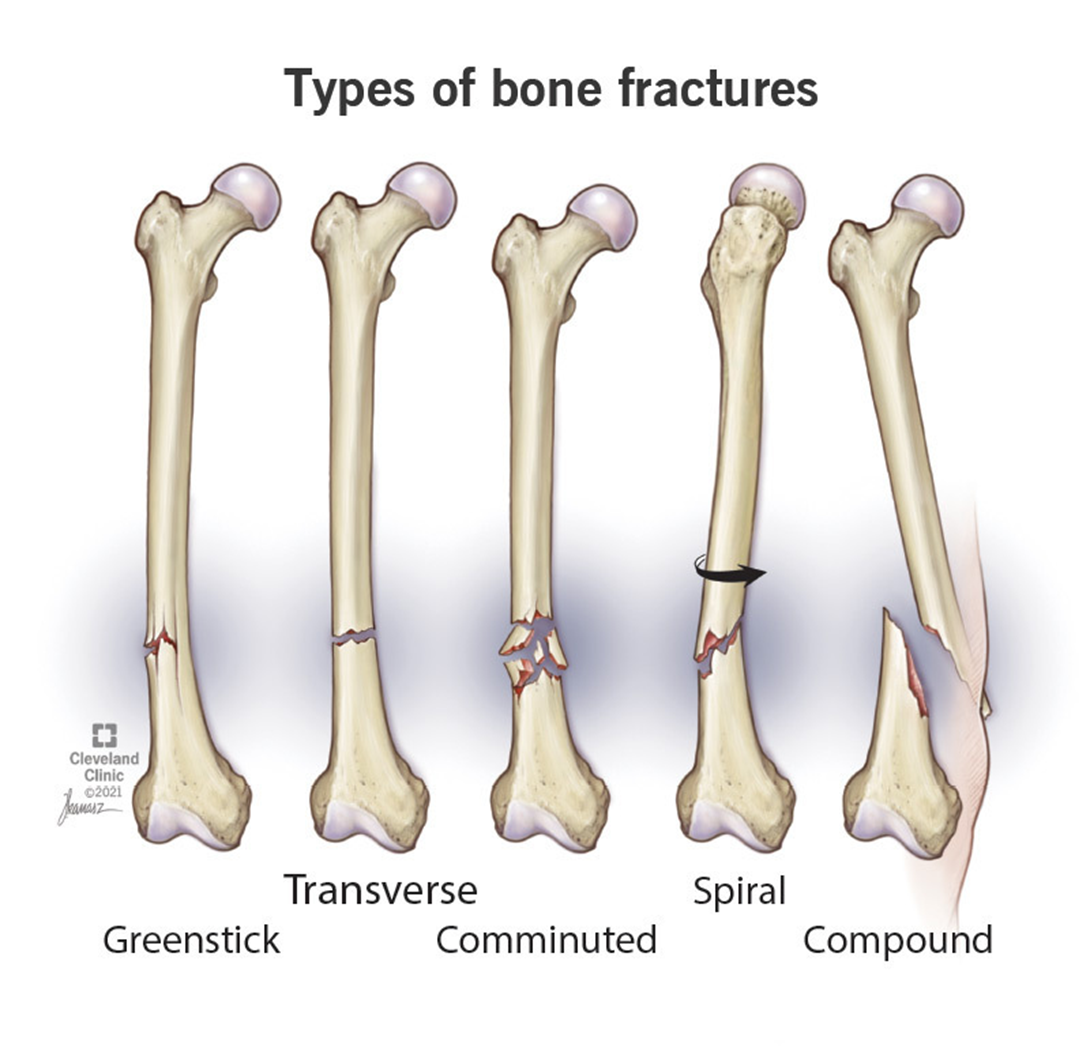A nurse in the emergency department is assessing a preschool-age child who has bruises on both arms and a spiral fracture of the left ulna. The child's parent tells the nurse that the child tripped over some toys and fell down. Which of the following actions should the nurse take?
Take pictures of the child's injuries once the parent leaves the room.
Have a facility security officer interview the parent.
Complete an incident report concerning the child's injuries.
Report the child's injuries to Child Protective Services.
The Correct Answer is D
Choice A reason: Taking pictures of the child's injuries once the parent leaves the room is not a correct action, as it violates the child's privacy and dignity. The nurse should not take pictures of the child without the parent's consent and only if it is required by the facility's policy or the law.
Choice B reason: Having a facility security officer interview the parent is not a correct action, as it is not within the scope of the security officer's role and may escalate the situation. The nurse should not involve the security officer unless there is a threat of violence or harm to the child, the parent, or the staff.
Choice C reason: Completing an incident report concerning the child's injuries is not a correct action, as it is not relevant to the child's situation. The nurse should complete an incident report only if there is an adverse event or error that occurred within the facility that affected the child's care or safety.
Choice D reason: Reporting the child's injuries to Child Protective Services is the correct action, as it is the nurse's legal and ethical duty to protect the child from potential abuse or neglect. The nurse should suspect child abuse based on the child's injuries, which are inconsistent with the parent's explanation and indicative of non-accidental trauma. The nurse should follow the facility's protocol and the state's law for reporting suspected child abuse.

Nursing Test Bank
Naxlex Comprehensive Predictor Exams
Related Questions
Correct Answer is D
Explanation
Choice A reason: Taking pictures of the child's injuries once the parent leaves the room is not a correct action, as it violates the child's privacy and dignity. The nurse should not take pictures of the child without the parent's consent and only if it is required by the facility's policy or the law.
Choice B reason: Having a facility security officer interview the parent is not a correct action, as it is not within the scope of the security officer's role and may escalate the situation. The nurse should not involve the security officer unless there is a threat of violence or harm to the child, the parent, or the staff.
Choice C reason: Completing an incident report concerning the child's injuries is not a correct action, as it is not relevant to the child's situation. The nurse should complete an incident report only if there is an adverse event or error that occurred within the facility that affected the child's care or safety.
Choice D reason: Reporting the child's injuries to Child Protective Services is the correct action, as it is the nurse's legal and ethical duty to protect the child from potential abuse or neglect. The nurse should suspect child abuse based on the child's injuries, which are inconsistent with the parent's explanation and indicative of non-accidental trauma. The nurse should follow the facility's protocol and the state's law for reporting suspected child abuse.

Correct Answer is C
Explanation
Choice A reason: This is not the correct choice because training LPNs to reinforce teaching with clients using a standardized teaching plan is a possible solution, but not the first step. The nurse manager should first identify the root cause of the problem before implementing any interventions.
Choice B reason: This is not the correct choice because including documentation of client education as part of unit nurses' annual performance evaluation is a way to monitor and evaluate the staff's performance, but not a way to improve it. The nurse manager should first address the barriers and challenges that prevent the staff from documenting client education effectively.
Choice C reason: This is the correct choice because determining factors that interfere with the documentation of client education is the first step in the quality improvement process. The nurse manager should use data analysis, staff feedback, and observation to find out the reasons for the low documentation results, such as lack of time, knowledge, skills, or resources.
Choice D reason: This is not the correct choice because offering incentives for the staff once the unit's results are back in adherence with the benchmark is a way to motivate and reward the staff, but not a way to solve the problem. The nurse manager should first implement evidence-based strategies to improve the documentation of client education, such as providing education, feedback, and tools.
Whether you are a student looking to ace your exams or a practicing nurse seeking to enhance your expertise , our nursing education contents will empower you with the confidence and competence to make a difference in the lives of patients and become a respected leader in the healthcare field.
Visit Naxlex, invest in your future and unlock endless possibilities with our unparalleled nursing education contents today
Report Wrong Answer on the Current Question
Do you disagree with the answer? If yes, what is your expected answer? Explain.
Kindly be descriptive with the issue you are facing.
